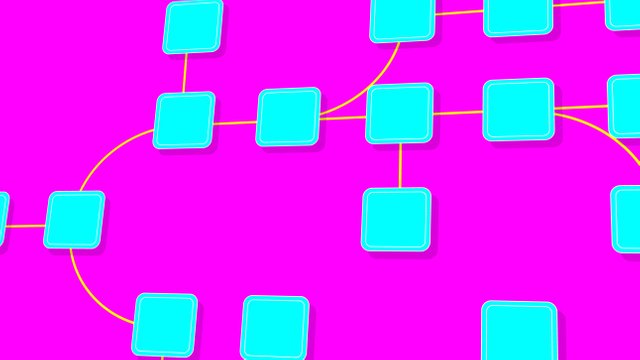Practical Examples Of How Blockchains Are Used In Banking And The Financial Services Sector
While there are still several hurdles to overcome before blockchain transforms finance and banking as we know it, the potential cost and labor savings it could create for the global financial market are so appealing that many major financial institutions are investing millions in resources to research how best to implement it. I believe blockchain is a technological advance that will have wide-reaching implications that will not just transform financial services but many other businesses and industries.
Billions of individuals and businesses are served and trillions of dollars are moved around the antiquated global financial system each day. Still heavily reliant on paper, albeit dressed up with a digital façade, there are many issues with this system that cause added expense and delays as well as make it easier for crime and fraud to cripple it. Despite the financial industry’s resistance to change, blockchain and its expected benefits make it worthwhile.
Many of you may be familiar with Bitcoin, a type of digital currency that operates independently from a central bank, but the tech behind that system most people are not familiar with is blockchain. There are many different blockchains—public and private—and they allow anyone to send value anywhere in the world where the blockchain file can be accessed. Think of each chain as an online database stored in a distributed, peer-to-peer fashion. The storage devices for the database are not all connected to a common processor and each block—ordered records—has a timestamp and a link to a previous block.
Cryptography ensures that users can only edit the parts of the blockchain that they “own” —by possessing the private keys necessary to write to the file. It also ensures that everyone’s copy of the distributed blockchain is kept in sync.
Full story at http://bit.ly/2uzFUVH
Source: Forbes
Microsoft wants to make blockchain networks enterprise-ready with its new Coco Framework
Interest in blockchains is at an all-time high, but there are still plenty of technical issues to solve, especially for enterprises that want to adopt this technology for smart contracts and other use cases. For them, issues like throughput, latency, governance and confidentiality are still major stumbling blocks for using blockchains. With its new Coco Framework, Microsoft wants to solve these issues and make blockchains more suitable for the enterprise.
In an interview earlier this week, Microsoft’s CTO for Azure (and occasional novelist) Mark Russinovich told me the company is seeing a lot of interest in blockchain technology among its users. They like the general idea of a distributed ledger, but a system that can only handle a handful of transactions a second doesn’t work for them — what they want is a technology that can handle a thousand or more transactions per second.
The Coco Framework solves these fundamental issues with blockchains by introducing a trusted execution environment (TEE). The basic idea here is that you have a trusted box on which you can trust to put your blockchain code. That trust is established through tools like Intel’s Software Guard Extensions or Windows’ Virtual Secure Mode — and because it’s an open framework, it can also support other TEEs as they become available. With these TEEs you can then build a network of trusted enclaves that all agree on the ledger and Coco code they are running (it’s a concept Intel and others have also experimented with in the past).
Once you have these trusted enclaves, all the other pieces fall into place. Because you can trust the updates to the ledger, you don’t need to perform any proof of work, which greatly increases the transaction speed. In a typical ledger, that would take seconds or even minutes. But with the enclaves, that’s not an issue, and Microsoft says Coco and Ethereum can handle up to 1,600 transactions per second in its prototype setup. Thanks to this, the blockchain network — when combined with a protocol like Paxos for ensuring consistency — becomes a usable database.
Full story at http://tcrn.ch/2uzxPjM
Source: TechCrunch
California to Offer Blockchain-Linked EV Charging Stations
Blockchain technology is all the rage these days, as applications for the secure distributed ledger system proliferate. Recent reports include applications in agriculture, finance, and now, electronic vehicles according to a recent report.
Most systems for charging electric vehicles are located in individual users’ homes.
This means that after the user has left for work, the charger is sitting idle until evening.
One company is seeking to build a peer-to-peer system designed to allow electric vehicle drivers to share and receive payment for their charging stations during off hours.
Since electronic charging stations are few and far between on California highways, the distributed system would allow electronic motorists access to charging locations throughout the state.
Full story at http://bit.ly/2uPEukS
Source: CoinTelegraph
Agriculture Process Gets Blockchain Lift with Pilot Blockchain Tracking System
Several agricultural industry players showed growing interest in testing the benefits of Blockchain technology in supply chain tracking and data reporting. In a report released by The Australian Financial Review, CBH Group announced that it will test Blockchain technology in the tracking of oat shipments.
The Australia’s largest grain exporter, CBH Group, partnered with Sydney-based startup AgriDigital for the pilot project which will develop a Blockchain-based system to trace the grain's origin and document its quality.
The Blockchain-based system will display supply chain data to potential buyers. CBH hopes that this will increase buyers’ confidence in grain stores and boost sales for Australian grain growers looking to expand to Asian markets.
The Blockchain management pilot is set to launch next week at CBH's oats processor, Blue Lake Milling in South Australia. CBH Chief Executive Andy Crane said that if the project is successful, the pilot could eventually expand to cover the entire multi-billion dollar Western Australian grain industry.
Full story at http://bit.ly/2uPJAxy
Source: CoinTelegraph
Op Ed: Is the Blockchain Economy Ushering in a New World Economic Order?
The first important recent event in the blockchain economy is the long-anticipated Bitcoin hard fork that happened on August 1, 2017. A hard fork is a change to the software protocol that creates a permanent divergence from the previous version of the blockchain, such that nodes running the old software are no longer accepted by the newer version. The change was for the purpose of improving scalability, the Bitcoin blockchain’s ability to handle larger-size blocks of transactions.
The number of transactions per block swelled from 400 in 2014 to 2,000 at the beginning of 2017, so developers had plenty of advance warning to work out a solution for greater scalability. The hard fork is an example of decentralized democracy in action in that participants registered their preference regarding one of two methods for addressing the scalability challenge. The majority of the constituencies (developers, miners, exchanges, wallet companies and merchants) elected the hard fork to one of the new protocols (SegWit2x), while the other group split to a new Bitcoin blockchain, Bitcoin Cash, which supports another protocol.
It was almost possible to see Adam Smith’s invisible hand operating in real-time as transactions amassed and the first block was recorded on the new Bitcoin Cash blockchain six hours after the split. It comprised of 6,985 transactions in a block size of 1.9 MB, indeed almost two times the previous block size, thus demonstrating greater scalability.
The economic theory upshot of the Bitcoin hard fork is that it is a demonstration of competitive markets proceeding in an orderly and efficient fashion, offering choices to participants, who coordinated themselves between the two options.
Full story at http://bit.ly/2uPf5If
Source: Bitcoin Magazine
Thomson Reuters Launches Blockchain Startup Incubator
In a recent press release, Thomson Reuters, the behemoth news and information company, announced the formation of a new startup tech incubator designed to help facilitate up and coming technological innovation including Blockchain.
The new forum, termed Incubator Labs, offers startups in various fields access to free resources like office space, Amazon web services and mentorship at a number of locations.
The press release stated that “the Incubator will host early-stage entrepreneurs building next-generation products in big data, advanced analytics, distributed ledgers, artificial intelligence, machine learning and other transformational technologies.”
Full story at http://bit.ly/2u6Z9oE
Source: CoinTelegraph







Downvoting a post can decrease pending rewards and make it less visible. Common reasons:
Submit
Downvoting a post can decrease pending rewards and make it less visible. Common reasons:
Submit
Downvoting a post can decrease pending rewards and make it less visible. Common reasons:
Submit
Downvoting a post can decrease pending rewards and make it less visible. Common reasons:
Submit
This is impressive stuff.
Downvoting a post can decrease pending rewards and make it less visible. Common reasons:
Submit
I love this!
Downvoting a post can decrease pending rewards and make it less visible. Common reasons:
Submit
Downvoting a post can decrease pending rewards and make it less visible. Common reasons:
Submit
Great job explaining.
Downvoting a post can decrease pending rewards and make it less visible. Common reasons:
Submit
5WCYJB7s1srPNYqLjizw3PDqDEfNfXXJNB47gQauDYUH7ZHHWH29LnkheszihGnzSnZfTtMAAHHX45dkyrTjzaJKJrTCpdV
Downvoting a post can decrease pending rewards and make it less visible. Common reasons:
Submit
Share and UpVote the Steemit post and I will send 20 Superior Coins. Leave your wallet address as a comment on the post. Don't have a wallet then register for one here http://the-superior-coin.com/register
Downvoting a post can decrease pending rewards and make it less visible. Common reasons:
Submit
This is sensational.
Downvoting a post can decrease pending rewards and make it less visible. Common reasons:
Submit
You're on fire!
Downvoting a post can decrease pending rewards and make it less visible. Common reasons:
Submit
Downvoting a post can decrease pending rewards and make it less visible. Common reasons:
Submit
This is world-class material.
Downvoting a post can decrease pending rewards and make it less visible. Common reasons:
Submit
You've got a new fan!
Downvoting a post can decrease pending rewards and make it less visible. Common reasons:
Submit
This is remarkable work.
Downvoting a post can decrease pending rewards and make it less visible. Common reasons:
Submit
Downvoting a post can decrease pending rewards and make it less visible. Common reasons:
Submit
Downvoting a post can decrease pending rewards and make it less visible. Common reasons:
Submit
Downvoting a post can decrease pending rewards and make it less visible. Common reasons:
Submit
Well researched.
Downvoting a post can decrease pending rewards and make it less visible. Common reasons:
Submit
You're a wizard at this!
Downvoting a post can decrease pending rewards and make it less visible. Common reasons:
Submit
This is truly exceptional.
Downvoting a post can decrease pending rewards and make it less visible. Common reasons:
Submit